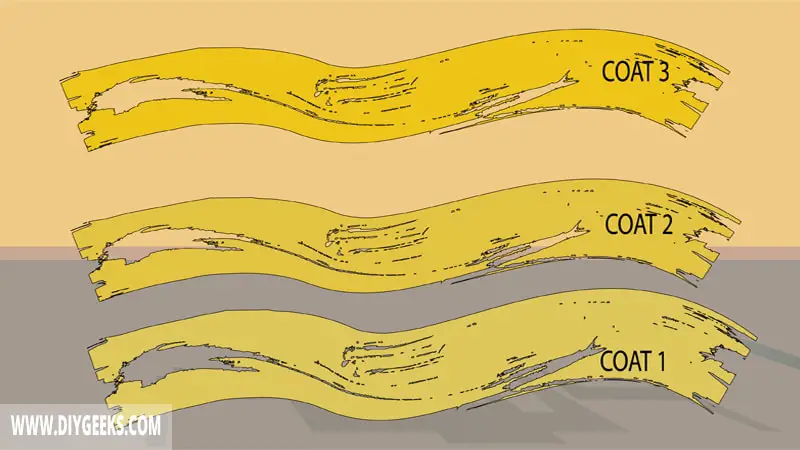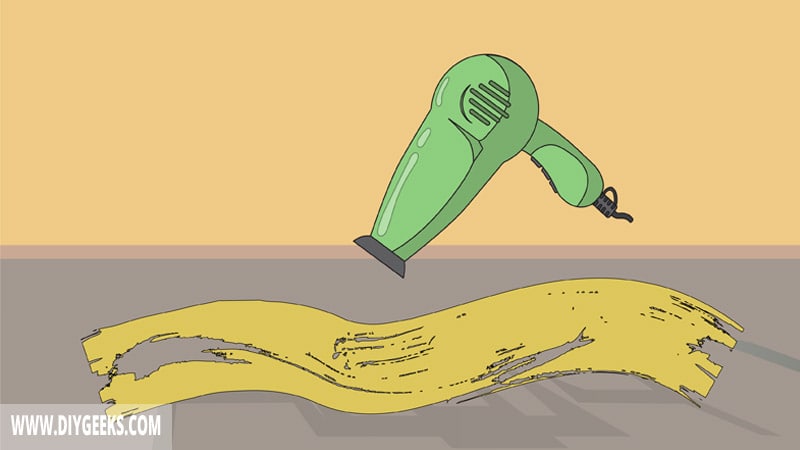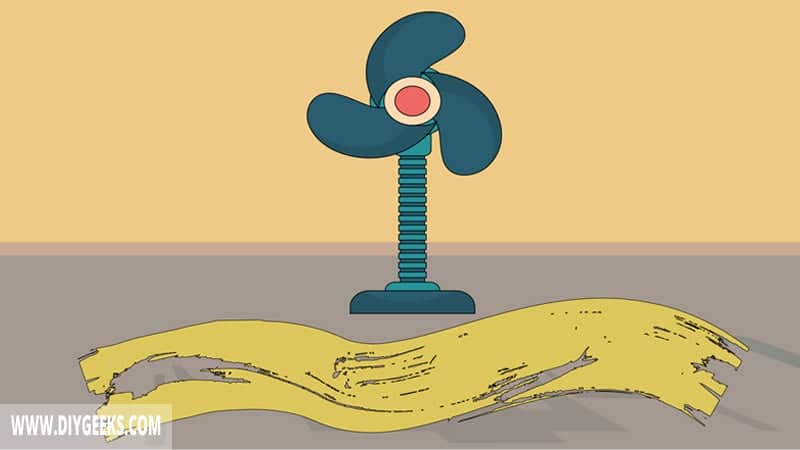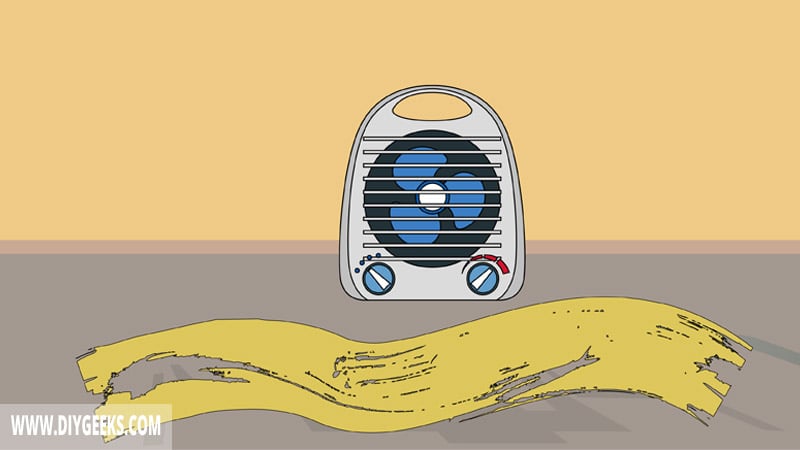Polycrylic takes around 2 hours to dry between coats and around 24-48 hours to cure (fully dry).
To speed up the polycrylic drying time, use a hair dryer, increase air circulation, or use a dehumidifier.
Polycrylic has a water-based formula but creates a moisture-resistant coating to protect surfaces.
How Long Does Polycrylic Take to Dry Between Coats?

Polycrylic takes around 2 hours to dry between coats. The exact dry time depends on the room temperature, humidity levels, and coat thickness.
For polycrylic to dry, its solvent (water) must evaporate and the coating must become hard and rigid. The sealer dries fast since water evaporates from the coating fast.
If you re-coat polycrylic too soon, the finish will turn sticky, tacky, or may peel off. That’s because the solvent (water) will be trapped between two coats and won’t evaporate. The solvent (water) will prevent the existing coating from drying, and the new coating from adhering and drying, creating a sticky finish.
To know if polycrylic is dry enough for a re-coat, inspect the finish texture. If the finish is still wet (or sticky), the sealer hasn’t dried yet. If the finish has a hard dry textured appearance, the sealer is dry and you can re-coat it.
How Long Does Polycrylic Take to Cure (Fully Dry)?
Polycrylic takes around 24-48 hours to cure (fully dry). The exact curing time is determined by the room temperature, humidity levels, and air circulation.
The curing time refers to the time to wait until the finish can be subjected to regular use, cleaning, or washing. Once polycrylic cures (fully dries), it reaches its maximum durability, adhesion, and strength.
If the polycrylic finish is used, cleaned, or washed before curing, the finish will turn sticky and become water-logged for several hours or days.
How To Speed Up Polycrylic Drying Time?
To speed up polycrylic drying time, do the following things.
- Use a Hair dryer.
- Increase Air Circulation.
- Use a Dehumidifier.
1. Use a Hair dryer

Since polycrylic dries through evaporation, use a hair dryer to increase the heat and evaporation rate. Once the heat around the coating is increased, the solvent (water) will evaporate faster and the finish dries faster.
Here’s how to do it:
- Use the hair dryer at medium temperature.
- Move the hair dryer over the polycrylic finish for 5 minutes. Don’t keep it at the same place (spot) for too long.
- Turn off the hair dryer after 5 minutes and allow the finish to dry itself.
Don’t fully dry the polycrylic finish with a hair dryer as it can cause it to dry too fast. If a finish dries too fast, the particle won’t bond or harden naturally and the finish will develop cracks.
2. Increase Air Circulation

To speed up polycrylic curing time, increase the air circulation around the coating. The more air circulates over the coating, the faster the sealer dries and cures.
To increase the air circulation around the coating, do the following things.
- Open all doors and windows to allow cross ventilation.
- Turn on fans in the room to move air quickly through the coating.
- Open the air vents if the room has one.
3. Use a Dehumidifier

To speed up the polycrylic drying time, decrease the humidity levels with a dehumidifier. Once the humidity levels are lower, the solvent (water) evaporates faster and polycrylic dries faster.
To decrease the humidity levels, do the following things.
- Set the Dehumidifier. For polycrylic to dry fast, the humidity levels must be lower than 50%. Set up the dehumidifier to lower the humidity at that range.
- Let the Dehumidifier Run. – Allow the dehumidifier to run until the sealer is fully dry.
Other tips that can help polycrylic dry faster are listed below.
- Applying thin coats.
- Letting existing coats dry before re-coat.
- Applying it in the least humid conditions.
- Applying it when the weather feels warm or hot.
Tip: Don’t use Japan drier for polycrylic because it’s best suited for oil-based paints, while polycrylic is water-based.
Related Read: Do You Need To Sand Coats of Polycrylic?
Does Polycrylic Dry Hard?
Polycrylic does dry hard and forms a moisture-resistant coating over the surface. The sealer’s hardness and glossiness depend on the sheen type you use. For instance, satin polycrylic doesn’t produce a glossy or hard finish, while high-gloss polycrylic does.
Polycrylic has a water-based formula and doesn’t produce a hard or glossy finish as polyurethane does. The sealer is made of fewer additives, but it still produces a moisture-resistant finish that protects the surface from moisture, water, scratches, handling, and other things.
Related Read: Can You Paint Over Polycrylic Paint?


